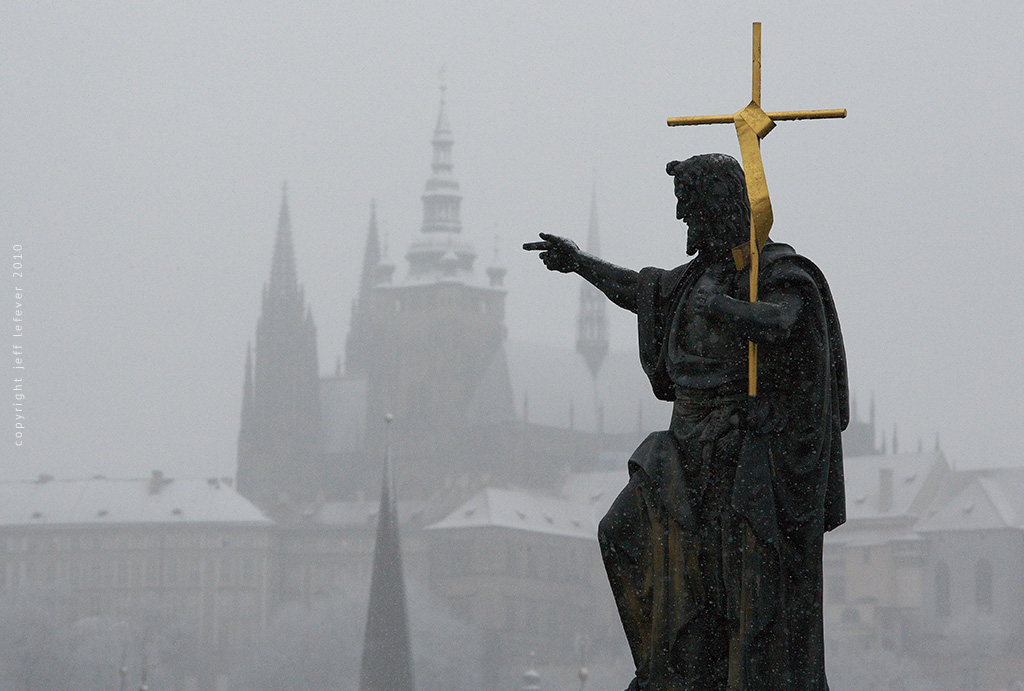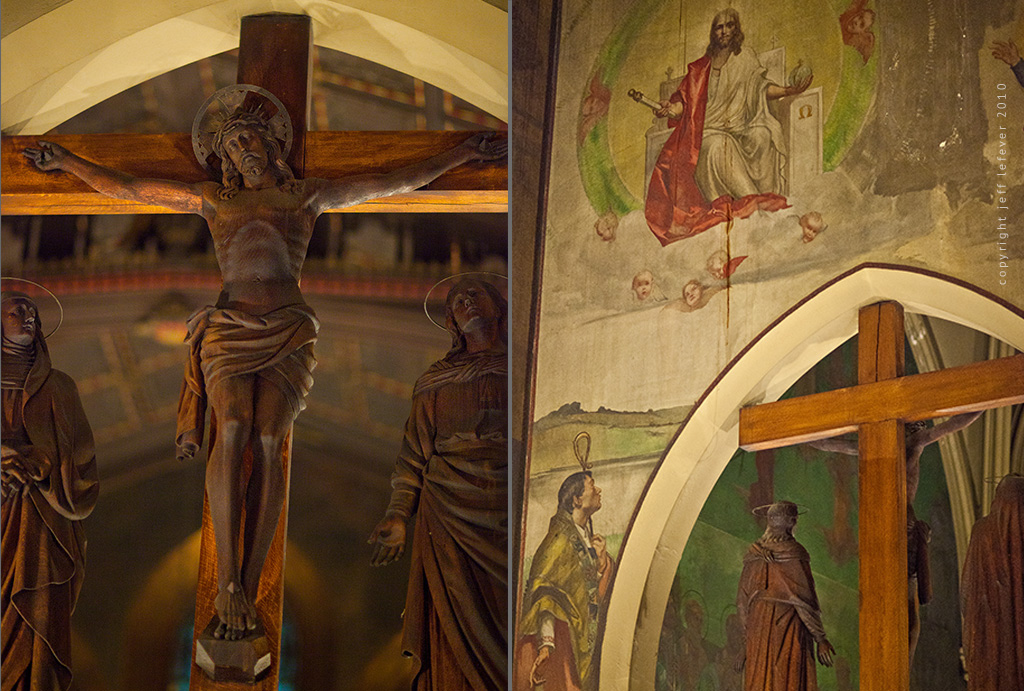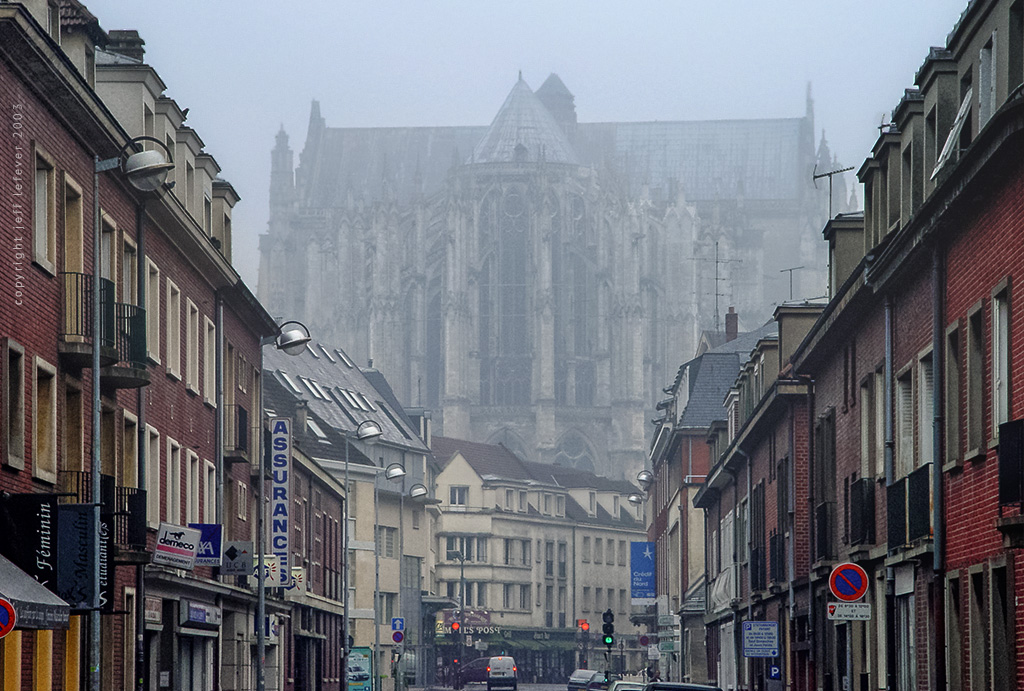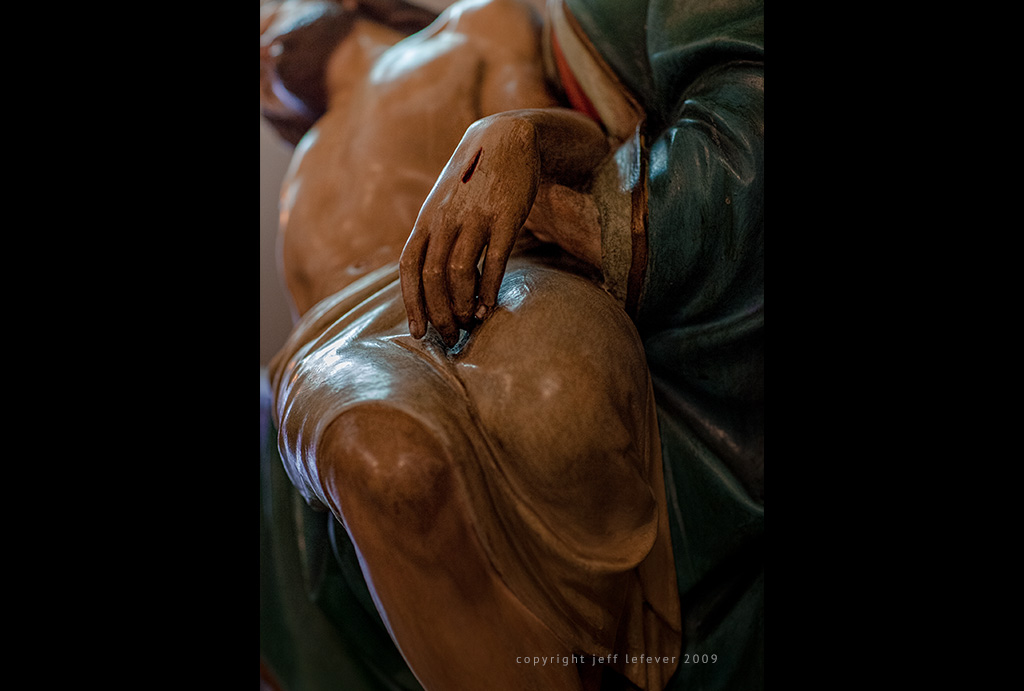The power of an image to persuade our thoughts today is strong – how much more so was it when the world was less image-saturated?
Across Prague there are many saints and patriarchs cast in stone, contemplating the divine price, weighing their options in this world.
It is easy to balk at these statues, to ask if churches should have spent the money. It is easy to be angry that some sculptor was paid a wage that could have fed the poor.
But would not the artists be the poor if not for work? Who then is the patron?
Yes, it is easy to balk at statues that line bridges and churchyards and stairways, especially the less original works purchased from a catalog. It is easy to walk past them every day until they are no longer visible to our eyes. But then, maybe at that point, they are no longer for us?
To see public, sacred art for the first time, or during a reflective time or a frightening moment of vulnerability; to see the Divine drama… it is then those statues may remind us that, perhaps, there is more to consider.
Prague, I am told, is a city where only 20 percent of its inhabitants practice the Christian faith (a statistic from St. Vitus Cathedral). This once-strong Catholic nation; this Ground Zero of the Hussites, where Jan Huss led reform prior to Luther and Calvin; this is a place where faith is now a historic wink?
I wonder what part image plays. When did the Christian sculptures and paintings throughout the country lose their impact in the daily lives of people here? Of people from anywhere?
Decades[bj1] of abuses, political and scriptural, declared the art as something false and impotent – sacred images were no longer associated with theology, but with corruption.
There was a time when images were scarce, but today we are saturated in mass production of images and broadcasting. Once, a single image would suggest a powerful idea; it would stand for more than mere decoration (though there was décor, craft guilds and the like, that is not what I am talking about).
I remember a story told from the medieval period; when a man was condemned to die, he would be led to the gallows by a priest holding a painting of a crucifix. The condemned had one last opportunity to consider his fate and consider his salvation in the last minutes of his life.
‘” ‘And as he ascended the stair he kept his eye on the tavoletta*, and with most loving accent said : Lord thou art my love; I give my heart…. here I am, Lord; I come willingly… And this he said with such tenderness that all who heard him were in tears… And halfway down the stairs he met the Crucifix, and said: What ought I to do? And the friar replied: This is your captain who comes to arm you. Salute Him, honour Him and pray that He gives you strength… And while descending the second flight of stairs, he continued praying, saying: In manus tua, Domine’
…from an eyewitness account of the execution of Pierro Pagolo Boscoli, condemned to death Feb. 22, 1512
*tavoletta [aprox. 15th c. – early 20th c.: a small board with painted image, two sides, with handle to be hand-held by a comforter before one condemned as they walked to the gallows or punishment; one side a painting of a scene from the Passion of Christ, the other, a martyrdom relevant to the punishment to be meted out to the prisoner] ”
from: The Power of Images: Chapter 1 : Response and Repression ~ David Freedberg
~JWL



